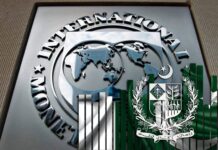ISLAMABAD: Regional cooperation is necessary to tackle a rising number of cross-border challenges in Asia and the Pacific, including infrastructure gaps, trade connectivity, financial contagion, and climate and disaster-resilience, according to a new report from the Asian Development Bank (ADB).
The Asian Economic Integration Report 2018 (AEIR) says collective action to build regional public goods brings greater benefits than if countries work alone to address issues that also affect their neighbours.
Regional public goods are goods, services, and systems of policies or rules that have shared benefits across countries, such as cross-border infrastructure, communicable disease control, and disaster risk management.
“Enhanced regional cooperation and coordination can help the countries manage regional issues, particularly if they complement national and global actions,” ADB Chief Economist Yasuyuki Sawada said. “Multilateral development banks can help increase regional public goods by reducing knowledge and financing gaps as well as promoting regular policy dialogue for long-term cooperation among countries.”
The report points to several efforts in Asia to establish and strengthen regional public goods. For example, the 2014 pledge by 18 Asian leaders to eliminate malaria by 2030 has spurred countries to work together to achieve the goal to the benefit of the entire region.
ADB’s Greater Mekong Subregion Health Security Project to help control communicable diseases in the Mekong region border areas is part of such efforts. Trade facilitation programs between countries in the Central Asia Regional Economic Cooperation region have boosted intraregional trade, supporting economic growth.
Asia’s intraregional trade—measured by value—rose to 57.8 per cent of its total global trade in 2017 from 57.2 per cent in 2016. The recovery in regional trade can be attributed to the expansion of global value chains after a slowdown since 2012. Intraregional foreign direct investment also increased slightly to $260.0 billion in 2017 from $254.7 billion in 2016.
Growing trade and investment linkages in Asia and the Pacific can be a buffer for the region against uncertainties in the global economy, the report says. However, it warns that uncertainty about trade policy could dampen the recovery in regional and global trade and damage consumer sentiment and business confidence in capital spending and investment.
The report notes that regional integration in Asia and the Pacific, as measured by ADB’s Asia-Pacific Regional Cooperation and Integration Index, or ARCII, increased modestly from 0.525 in 2015 to 0.530 in 2016, with a positive impact on economic growth and poverty reduction. The index incorporates six sub-indexes that measure trade and investment, money and finance, the regional value chain, infrastructure and connectivity, movement of people, and institutional and social integration.
























